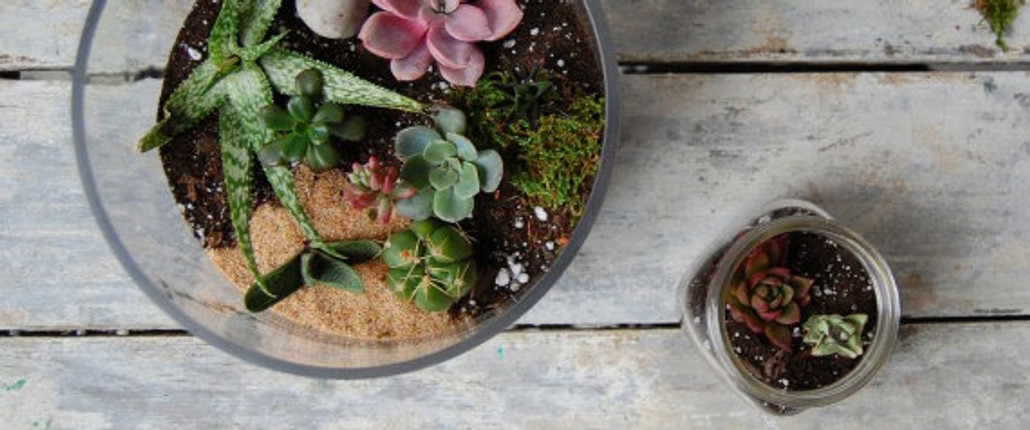
DIY: Summertime Terrarium
Posted by Richard H. on Aug 6th 2021
How to Make a Summertime Terrarium
As satisfying as a well-written recipe, a smart and thoughtful DIY is our kind of lunch break reading. Bonus points if it’s an easy project AND teaches us how to make something beautiful.
The first rule of making a terrarium is that you don’t talk about making a terrarium — you just go buy one. But who likes following rules? If you’ve got a spare half hour, enjoy saving cash, and like the idea of customizing your own, consider building a terrarium from scratch.
What You’ll Need:
- A glass container (we used a Cylinder Vase 8"×8″)
- Small pebbles
- Activated charcoal
- Potting soil
- Pumice, 1 part for every 4 parts soil
- A wooden spoon
- A wine cork
- A chopstick
- A stiff paintbrush
- Succulents and cacti of your choosing
- Sand, moss, and larger pebbles (optional), for decorating
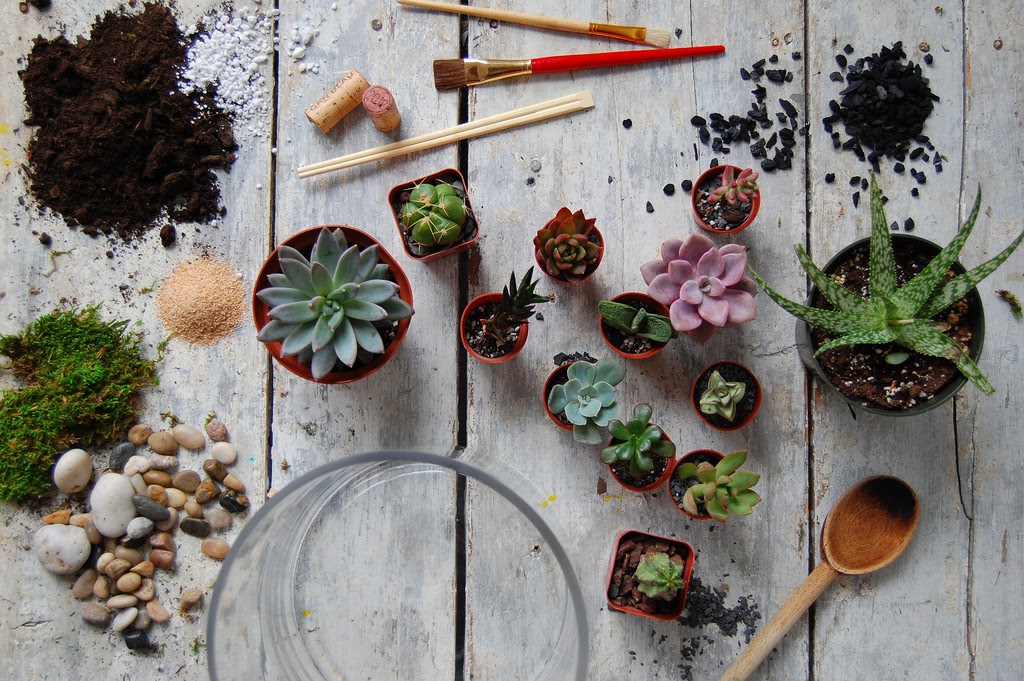
How to Build Your Terrarium:
1. Pick your plants: If you want your terrarium to survive in addition to looking nice, choose plants that grow in similar native conditions. Since the weather in California is abominably dry, I decided to work with succulents and a rogue cacti, since they don’t need much moisture to thrive.
2. Choose your container: Select any glass vessel that has a large enough top opening to stick your hand through ; it doesn’t need a hole for drainage on the bottom. We recommend our cylinder glass vases or our terrarium glass vases. They can be both purchased on our WGV International’s Webstore.
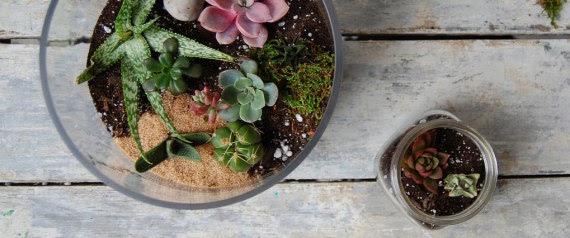
3. Blend your soil: The ratio of soil to pumice (the crumbly white pebbles of volcanic stone you’ve seen in your mom’s pansy planters) determines how much moisture your plants will retain, so measure accordingly. Succulents do well on a blend of 1 part pumice to 4 parts soil, and cactus like to be even drier: use 1 to 1 or 1 to 2, pumice to soil. Tropical plants, like ferns, do fine on straight potting soil. Measure enough dirt to cover the roots of all your plants, adding more if you want a thicker layer, and mix with pumice if using. (For a large container like this one, I used about 10 cups total.)
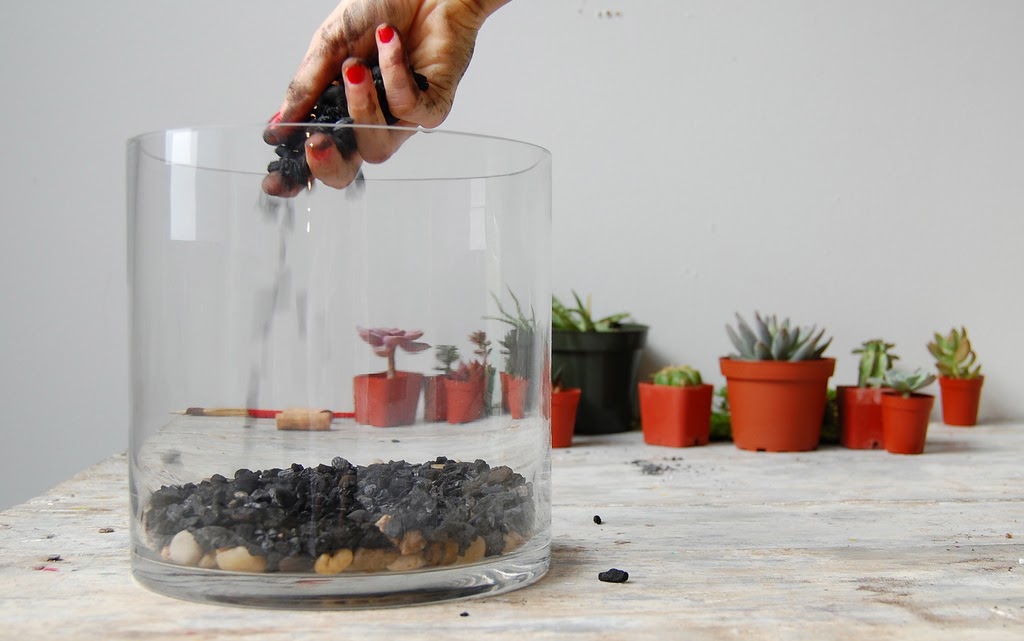
4. Layer the base: Start off with a half-inch of pebbles, followed by a half-inch of activated charcoal (which will get all over your hands and your face, but will not harm you). The first layer is where moisture will accumulate, since there’s no room for drainage; the pebbles serve as insurance against overwatering. The charcoal acts like an antimicrobial to help keep your plants from rotting. It’s also porous and absorbs excess moisture.
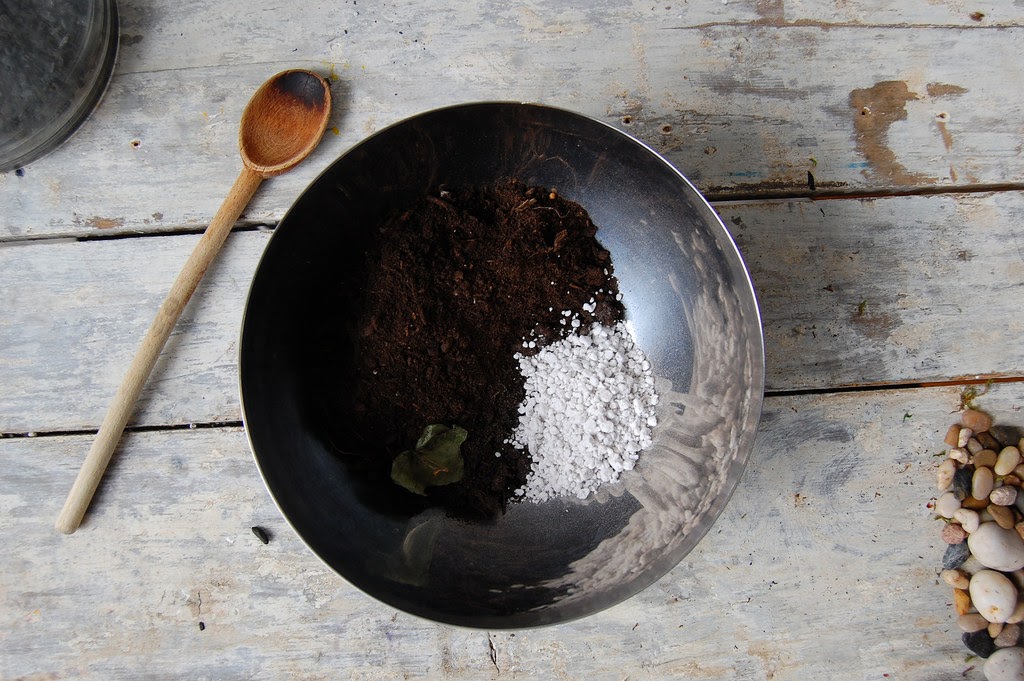
5. Envision and shape the terrain: Before adding the soil, decide how you want your arrangement to look. Will the environment be even across, or sloped with peaks and valleys? Which plants will go in the middle, and around the edges? How many will fit? Add a few inches or more of soil and shape it to create an interesting terrain for your plants.
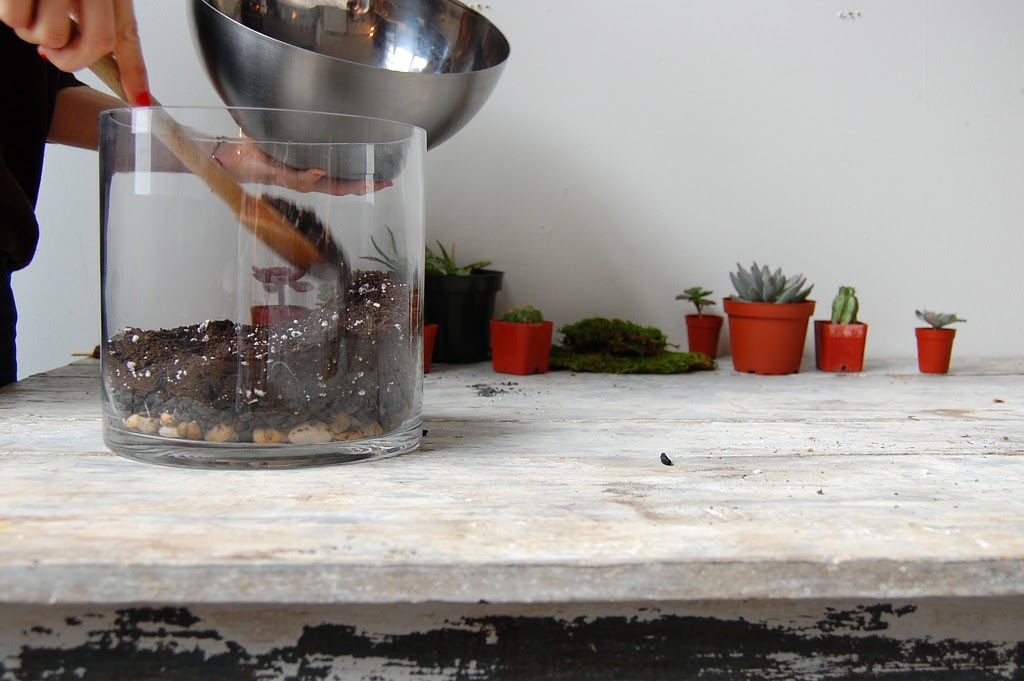
6. Loosen the roots, and landscape: When you take your plants out of their containers, gently loosen the soil from the roots and tease them apart, which prepares the plants to change environments and get settled in a new home. Then, arrange the plants according to your plan (or, completely diverging from it as I did), and top with more soil to cover the roots.
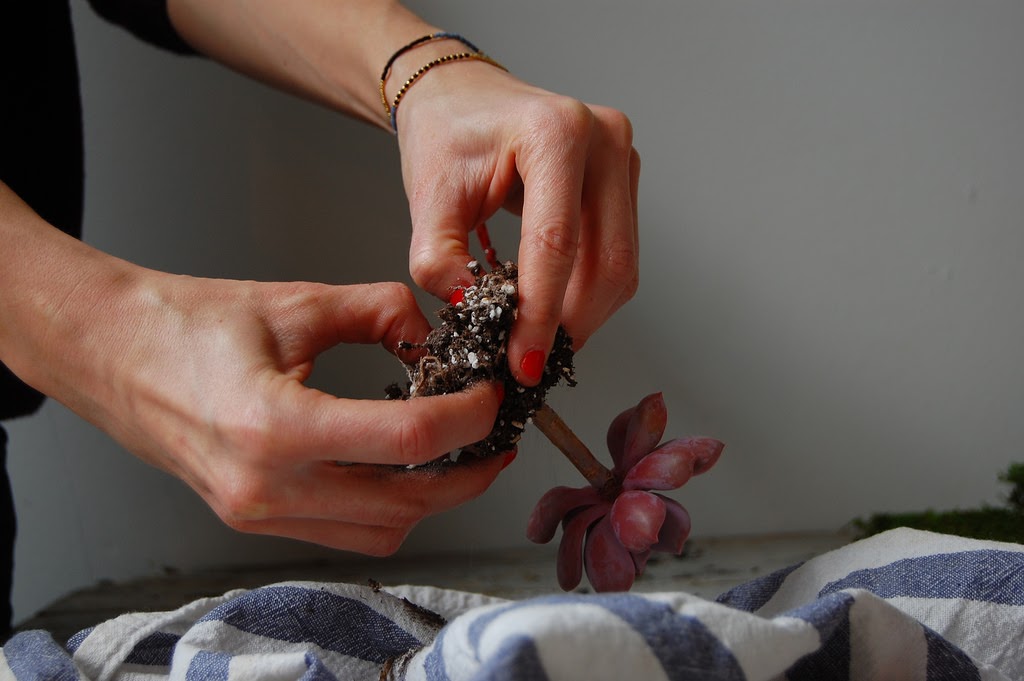
7. Get rid of air bubbles and clean up. Stab the end of a wine cork with a chop stick to create a makeshift soil tamper, and use it to tap out any air pockets that are lingering below the surface. Then, use your paintbrush to clean off any soil that’s crept up on the sides of the glass via magic and/or static electricity, and also to dust dirt off your succulents.
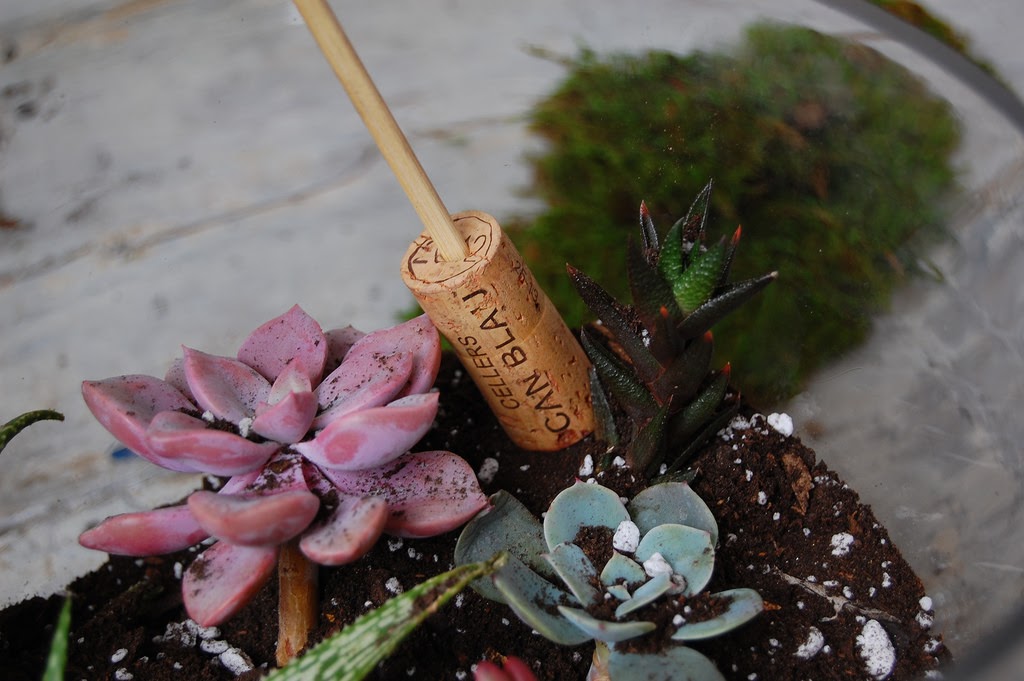
8. Accessorize: Avoiding any synthetic decorations (which might contaminate the soil when watered), decorate your landscape with pebbles, moss, and sand. I gave my cacti corner a little sandy surface to remind him of home.
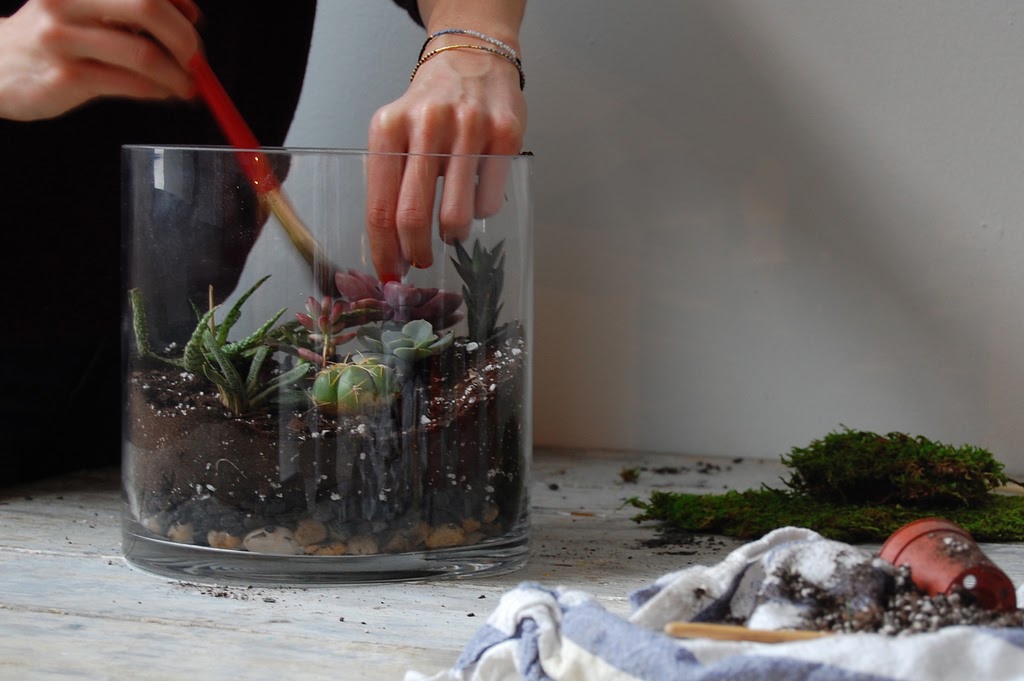
9. Care: Though many people will suggest feeding your terrarium just an ice cube per week, a better strategy is to look at the plants and let them tell you when they need water. A succulent will pucker at the base of the leaves when it needs water, and will get mushy (a sign of rotting) when over-watered. Wait for signs of thirst before watering (since they don’t require much) and then add just enough to get the soil wet — you don’t want there to be a pool accumulating on the bottom. In fall and winter, water succulents and cacti once a month or once every 2 months (and every 1 to 2 weeks in the spring and summer).

